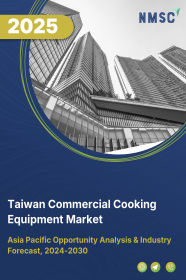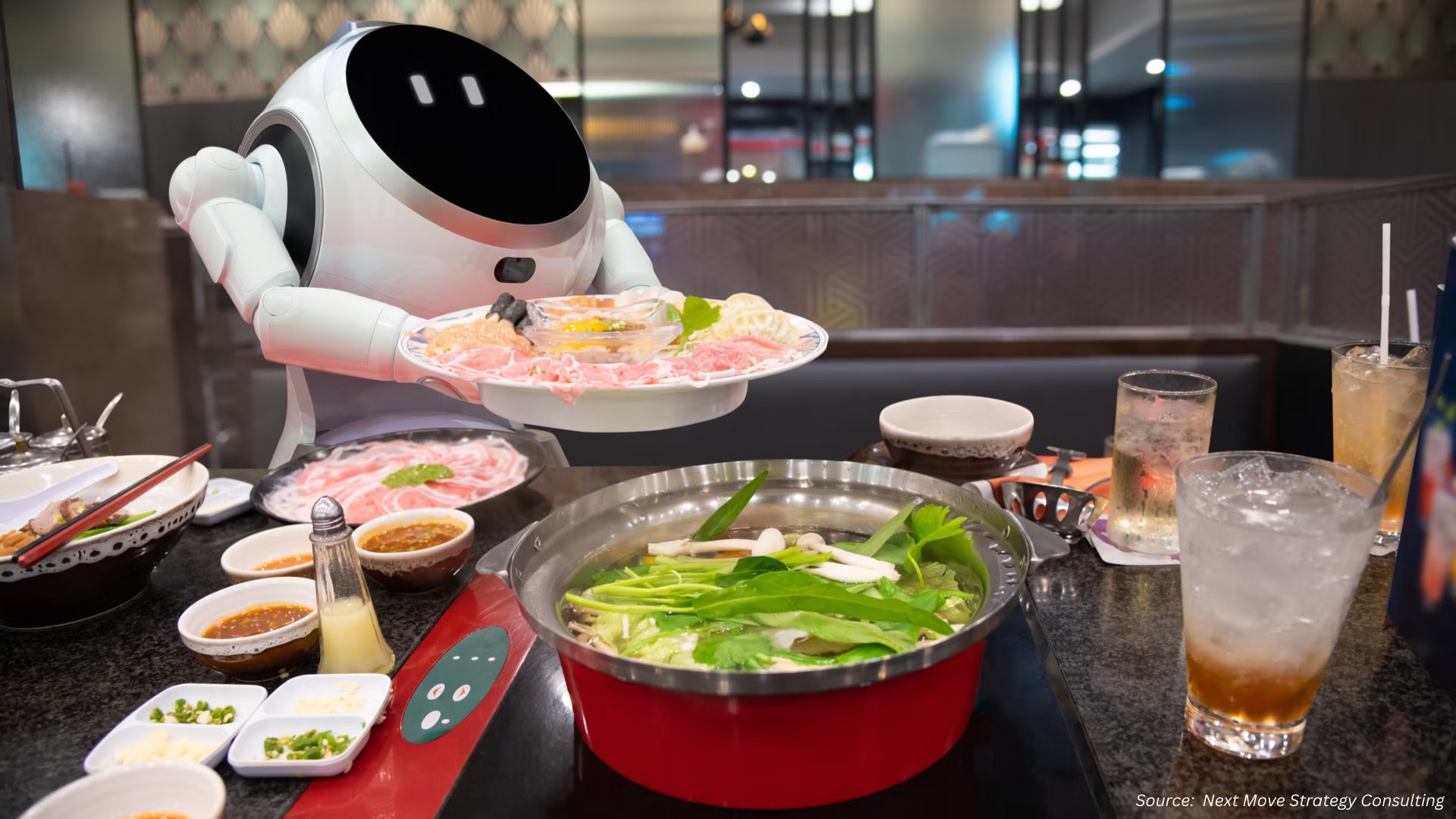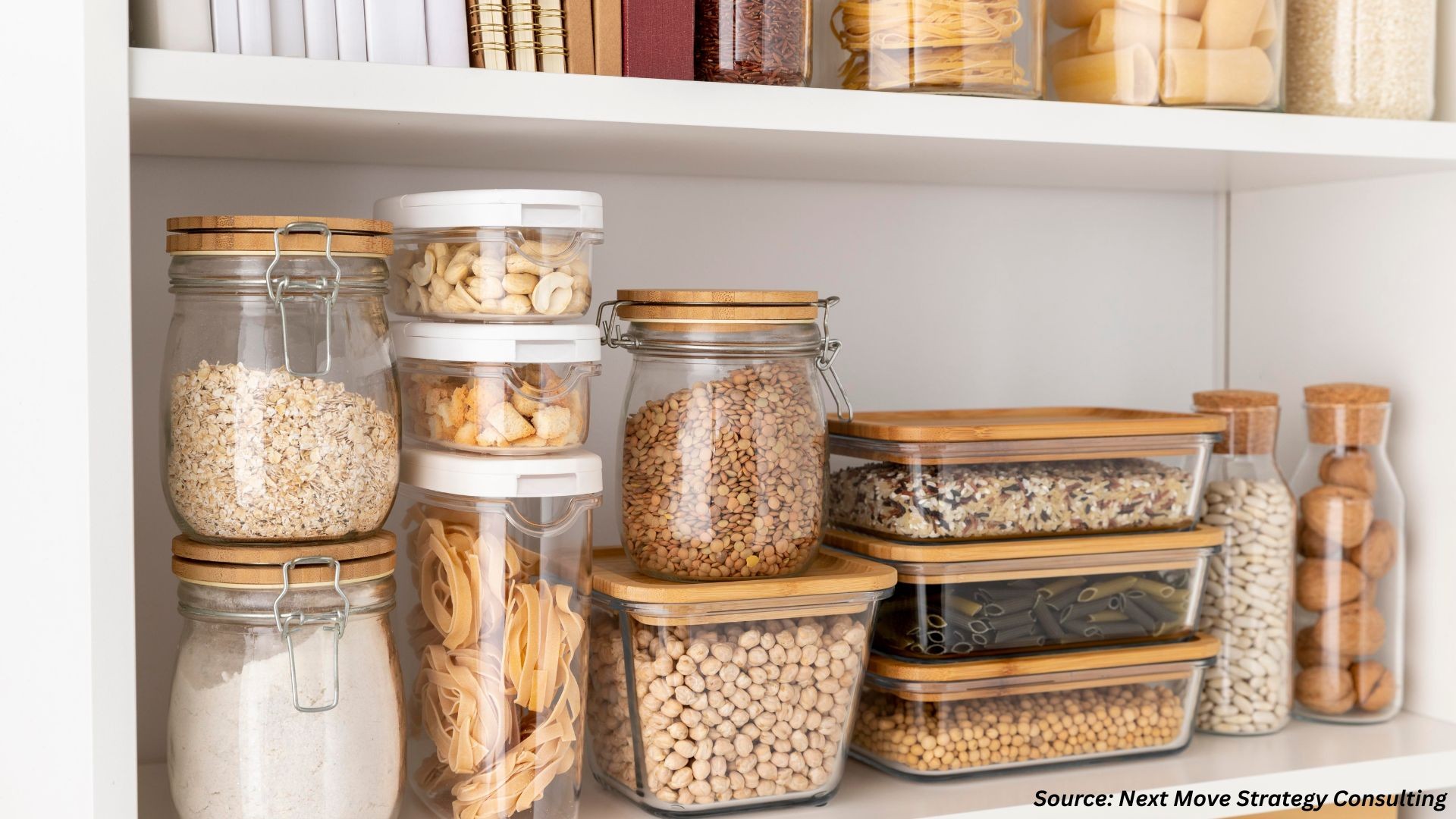
Taiwan Commercial Cooking Equipment Market By Type (Ovens, Ranges and Cooktops, Grills and Broilers, Fryers, Braising Pans and Tilting Skillets, Kettles,Braising Pans and Tilting Skillets, Steamers and Boilers, Cook-chill Systems, Kettles, Mixers, Grinder, Slicer, and Others), By End-User (Full-service Restaurants, Quick-service Restaurants, Catering Services,Railway Dining, Resorts & Hotel, Hospitals, and Other End Users)- Opportunity Analysis and Industry Forecast, 2024– 2030.
Industry: Retail and Consumer | Publish Date: 15-Nov-2025 | No of Pages: 133 | No. of Tables: 98 | No. of Figures: 63 | Format: PDF | Report Code : RC2954
Taiwan Commercial Cooking Equipment Market Overview
The Taiwan Commercial Cooking Equipment Market size was valued at USD 18.6 million in 2023, and is predicted to reach USD 37.2 million by 2030, at a CAGR of 9.9% from 2024 to 2030. In terms of volume, the market size was 2717 units in 2023, and is projected to reach 6824 units by 2030, with a CAGR of 13.3% from 2024 to 2030.
Commercial cooking equipment encompasses a variety of appliances and tools crafted for professional kitchens in restaurants, hotels, and catering businesses. Designed for efficiency and safety, this equipment is built with durable materials to endure continuous use, reducing downtime and ensuring a seamless kitchen workflow. Modern designs emphasize energy efficiency, helping businesses lower utility costs and environmental impact. Investing in top-tier hospitality cooking equipment is essential for maintaining smooth operations, enhancing competitiveness, and boosting profitability in the food service industry.
Expansion of Hospitality and Tourism Ecosystem Fueling Equipment Replacements
Taiwan’s tourism recovery has spurred significant investment in both new and renovated hospitality venues. Established hotels, boutique inns and resort chains are upgrading or replacing aging kitchen lines to cater to higher guest volumes and more discerning palates. These operators prioritize multi‑function combi ovens, high‑capacity steamers and heavy‑duty ranges that can deliver consistent quality during peak service hours. At the same time, specialty outlets—such as hotel brunch buffets and luxury afternoon‑tea lounges—are specifying bespoke equipment (e.g., sous‑vide cabinets, precision induction cooktops) to enable creative menu offerings. This wave of kitchen overhauls is creating sustained demand across major cities and emerging tourist hubs alike.
Proliferation of Qsr Brands and Digital-only “ghost” Kitchens
Quick‑service restaurants and delivery‑focused “ghost” kitchens have proliferated in Taiwan’s urban cores, radically shifting equipment requirements. These lean‑footprint operations need compact, rapid‑response appliances—such as conveyor pizza ovens, high‑speed fryers and auto‑portioning griddles—that can turn out standardized dishes with minimal labor. Integration with digital order‑management systems further demands smart connectivity in appliances, enabling remote monitoring of cooking cycles and real‑time inventory tracking. Franchise operators also emphasize uniformity across locations, driving bulk procurement of modular kitchen packages. As consumer preference for app‑based ordering and contactless delivery grows, ghost kitchens and QSRs will continue to propel unit‑volume growth in specialized cooking equipment.
Regulatory Incentives and Smart‑tech Adoption Boosting Equipment Uptake
Recent government initiatives—ranging from energy‑efficiency rebates to SME modernization grants—have made it more affordable for foodservice businesses to upgrade to next‑generation appliances. Under revised energy standards, new installations must feature eco‑friendly insulation, low‑emission burners and LED‑integrated control panels. Concurrently, the adoption of IoT‑enabled cookers, automated recipe libraries and predictive‑maintenance platforms is optimizing kitchen workflows. Data‑driven insights on usage patterns help operators minimize downtime and reduce utility costs, enhancing overall profitability. The convergence of regulatory support and smart‑tech innovation is therefore a powerful catalyst for both new purchases and equipment retrofits across Taiwan’s foodservice segment.
Volatile Raw Material Costs and Supply Chain Disruptions Constrain Procurement Budgets
Ongoing fluctuations in global steel, electronic components and specialty glass prices—exacerbated by intermittent port congestions and container shortages—have driven up the landed cost of commercial cooking appliances. Lead times for key parts, especially semiconductors for smart‑kitchen controls, can stretch beyond 20 weeks, forcing smaller operators to either prepay substantial deposits or defer critical upgrades. This uncertainty in pricing and availability makes it difficult for many foodservice businesses to plan capital expenditures, delaying investments in energy‑efficient or IoT‑enabled equipment and hampering overall market growth.
Competitive Landscape
The key players operating in the Taiwan commercial cooking equipment industry include Ali Group S.p.A, The Middleby Corporation, FUJIMAK CORPORATION, Electrolux Professional AB, Hoshizaki Electric Co. Ltd., Rational AG, UNOX S.p.A, ANKO Food Machine Co. Ltd., Sheang Lien Industrial Co. Ltd., Wise Kitchen International Co. Ltd., Tsunghsing Machinery Co. Ltd., Jendah Food Machinery Co. Ltd. , Mah Yih Enterprise Co. Ltd., Seven Castle Ent. Co. Ltd., Giantwell Machinery Co. Ltd., and others.
Taiwan Commercial Cooking Equipment Market Key Segments
By Type
-
Ovens
-
Ranges and Cooktops
-
Grills and Broilers
-
Fryers, Braising Pans and Tilting Skillets, Kettles
-
Braising Pans and Tilting Skillets
-
Steamers and Boilers
-
Cook-chill Systems
-
Kettles
-
Mixers, Grinder, Slicer
-
Others
By End-User
-
Full-service Restaurants
-
Quick-service Restaurants
-
Catering Services
-
Railway Dining
-
Resorts & Hotel
-
Hospitals
-
Other End Users
Key Players
-
Ali Group S.p.A
-
The Middleby Corporation
-
FUJIMAK CORPORATION
-
Electrolux Professional AB
-
Hoshizaki Electric Co., Ltd.
-
Rational AG
-
UNOX S.p.A
-
ANKO Food Machine Co., Ltd.
-
Sheang Lien Industrial Co., Ltd.
-
Wise Kitchen International Co., Ltd.
-
Tsunghsing Machinery Co., Ltd.
-
Jendah Food Machinery Co., Ltd.
-
Mah Yih Enterprise Co., Ltd.
-
Seven Castle Ent. Co., Ltd.
-
Giantwell Machinery Co., Ltd.
Report Scope and Segmentation
|
Parameters |
Details |
|
Market Size in 2023 |
USD 18.6 Million |
|
Revenue Forecast in 2030 |
USD 37.2 Million |
|
Growth Rate |
CAGR of 9.9% from 2024 to 2030 |
|
Market Volume in 2023 |
2717 Units |
|
Market Forecast in 2030 |
6824 Units |
|
Volume Growth Rate |
CAGR of 13.3% from 2024 to 2030 |
|
Analysis Period |
2023–2030 |
|
Base Year Considered |
2023 |
|
Forecast Period |
2024–2030 |
|
Market Size Estimation |
Million (USD) |
|
Market Volume Estimation |
Units |
|
Growth Factors |
|
|
Companies Profiled |
15 |
|
Market Share |
Available for 10 companies |
|
Customization Scope |
|
|
Pricing and Purchase Options |
Avail customized purchase options to meet your exact research needs. |

















 Speak to Our Analyst
Speak to Our Analyst

























